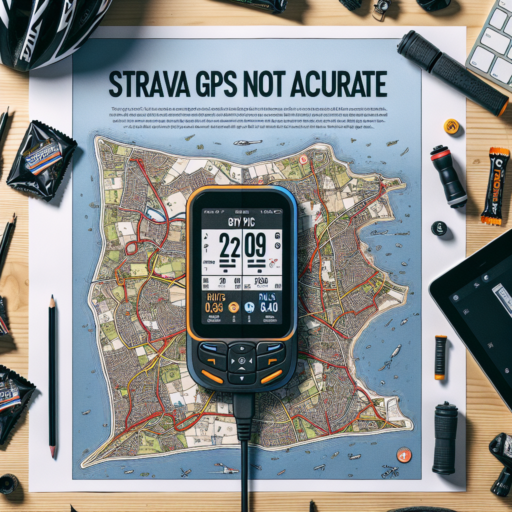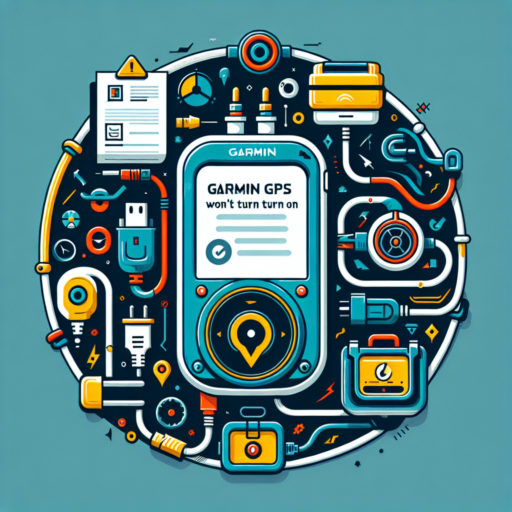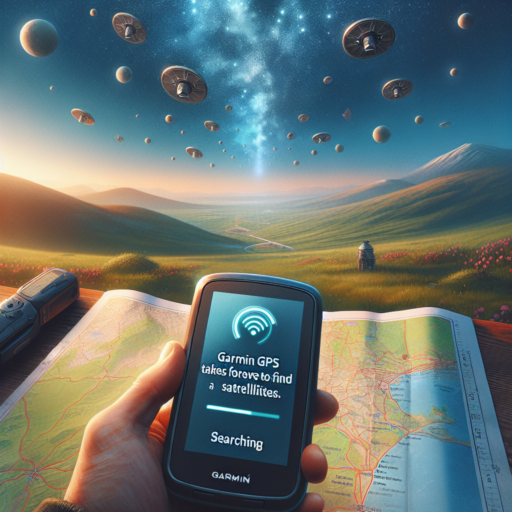Understanding the Causes of Inaccurate GPS on Phones
In the world of modern technology, GPS has become a cornerstone of everyday life, guiding us from one location to another with just a few taps on our smartphones. However, it’s not uncommon to encounter inaccuracies in GPS signals, leading to frustration and sometimes even leading us astray. Understanding the causes of these inaccuracies can help mitigate the problem and lead to a smoother navigation experience.
Poor Signal Quality
One of the primary causes of inaccurate GPS on phones is poor signal quality. This can be attributed to a variety of factors including obstruction by tall buildings, dense foliage, or even atmospheric conditions like stormy weather. Urban canyons, areas with high-rise buildings closely packed together, are particularly notorious for GPS signal degradation. The signals struggle to penetrate these obstructions, leading to a delayed or distorted positioning information.
Inadequate Satellites Coverage
Another significant factor is inadequate satellite coverage. GPS accuracy greatly depends on the number of satellites your phone can connect to. Generally speaking, your phone needs to connect with at least four satellites to provide an accurate location. However, in certain geographical locations or when in movement, connecting to the necessary number of satellites challenges the system, resulting in positioning errors.
How Phone GPS Accuracy Is Calculated and What Affects It
The accuracy of phone GPS systems hinges on a complex interplay of factors, ranging from the technology within the device to external environmental influences. Understanding the calculation of GPS accuracy and the elements that impact it is essential for users seeking reliable location data. This exploration delves into the core mechanisms and external variables that determine GPS precision.
Core Mechanisms Behind GPS Accuracy
The primary mechanism through which GPS accuracy is calculated involves the signal exchanges between the smartphone and multiple satellites orbiting the Earth. Essentially, the device calculates its position by determining the time it takes for signals to travel from satellites to the phone. A process known as trilateration is used to pinpoint the exact location based on at least three satellite signals. However, this process’s accuracy can be affected by the signal’s path length, atmospheric conditions, and the satellite’s geometry relative to the device.
Factors Influencing GPS Accuracy
Several key factors can significantly impact the precision of phone GPS systems. Firstly, environmental elements such as buildings, heavy foliage, and even atmospheric conditions like ionospheric delays can obstruct or distort the signal path, reducing accuracy. Secondly, the quality of the GPS receiver in the smartphone plays a crucial role. Advanced receivers can process signals more effectively, enhancing precision. Lastly, the number of satellites visible to the device greatly influences accuracy; more satellites result in better position information and reduced errors.
Top Solutions to Improve Your Phone’s GPS Accuracy
Improving your phone’s GPS accuracy is essential for navigation, fitness tracking, and various location-based services. Fortunately, there are several strategies to enhance the precision of your GPS system. Implementing these solutions can lead to more accurate directions, better tracking, and an enhanced overall user experience.
Check Your Location Services Settings
One of the most straightforward ways to improve your GPS accuracy is by examining your phone’s location services settings. Ensure that GPS, Wi-Fi, and mobile networks are enabled. This combination allows your device to use Assisted GPS (A-GPS), which significantly improves location accuracy, especially in areas where GPS signals might be weak or obstructed.
Update Your Phone’s Software
Manufacturers frequently release updates that include improvements to the GPS functionality. Keeping your device up to date ensures that you’re taking advantage of the latest enhancements and bug fixes that can improve GPS accuracy. Check for system updates in your phone’s settings and install them as soon as they’re available.
Calibrate the GPS
Calibrating your phone’s GPS can also markedly enhance accuracy. This process can vary depending on your device but generally involves opening a GPS-related app and moving your phone in a specific pattern. For Android devices, the Figure-8 motion is commonly recommended, while iPhone users can utilize the compass calibration in the Settings to improve location tracking capabilities.
Common Myths About GPS Accuracy on Smartphones Debunked
In the realm of smartphone technology, GPS functionality stands as a cornerstone feature, guiding millions of users daily. However, a cloud of myths surrounding its accuracy often misleads the public. Debunking these myths is crucial to understanding and optimizing how we use GPS services on our devices.
One prevalent myth is that GPS accuracy is uniform across all smartphones. The truth, however, is that GPS accuracy can vary significantly between devices due to differences in hardware and software optimizations. High-end smartphones might incorporate additional sensors and advanced GPS chipsets that enhance location precision, whereas budget models might lack these enhancements.
Another common misconception is that GPS works flawlessly indoors and in densely built-up areas. In reality, GPS signals can be obstructed by buildings, trees, and even inclement weather, leading to decreased accuracy. Modern smartphones attempt to mitigate this issue by augmenting GPS data with information from Wi-Fi networks and cellular towers, a technique known as Assisted GPS (A-GPS).
Lastly, the belief that keeping GPS running drains significant battery life is only partially true. Modern smartphones are designed to manage GPS functionality efficiently, with many devices featuring battery-saving modes specifically for GPS use. While continuous GPS activity can impact battery life, the effect is often less dramatic than many assume, thanks to advancements in battery technology and power management software..
No se han encontrado productos.
The Role of Software Updates in Enhancing GPS Accuracy
Software updates play a pivotal role in enhancing the accuracy of GPS devices, ensuring that they provide the most current and precise location data. One of the primary reasons software updates are crucial is that they often contain fixes for bugs that may have been affecting GPS performance. By addressing these flaws, updates help in refining the algorithms that GPS devices use to calculate location, leading to more accurate positioning.
Improvement of Satellite Data Processing
With each software update, the way a GPS device processes data from satellites can significantly improve. Developers constantly work on algorithms that better interpret satellite signals, taking into account factors like atmospheric conditions, which can affect signal strength and, consequently, accuracy. By refining these processes, software updates ensure that your device can determine location with greater precision.
Enhancement of Features and Functionalities
Apart from directly impacting accuracy, software updates often introduce new features or enhance existing ones that indirectly improve GPS performance. For example, updates might include improvements to how a device manages battery life, which is essential for maintaining the continuous operation necessary for optimal signal reception. Additionally, enhanced mapping software can provide users with more detailed and up-to-date maps, leading to better route suggestions and more accurate destination pinpointing.
Ensuring that your GPS device is running the latest software version is, therefore, essential for maintaining high accuracy levels. Manufacturers continuously work on enhancements, addressing not only issues that could degrade accuracy but also introducing new capabilities to keep up with the demands of modern technology and user expectations. Regularly updating your device not only contributes to the overall performance but also secures the reliability of location-based services you depend on.
Differences in GPS Accuracy Across Various Phone Models
The Global Positioning System (GPS) technology has revolutionized the way we navigate the world. However, not all GPS experiences are created equal, particularly when we consider the various phone models available on the market. The quality of GPS signal and accuracy can significantly differ from one smartphone model to another, influenced by several factors including hardware quality, software optimization, and GPS module used.
High-end smartphones typically come equipped with advanced GPS modules that support a wider range of satellite signals, such as GPS (USA), GLONASS (Russia), Galileo (Europe), and BeiDou (China). This multi-band support enables them to offer more precise location tracking. In contrast, budget models may limit their support to fewer satellite systems, impacting the overall accuracy and reliability of location services. Moreover, the integration of additional technologies like Assisted GPS (A-GPS), which uses cellular data to speed up satellite lock, also plays a crucial role in enhancing GPS accuracy.
Material and Design Influence: The physical design and materials used in smartphones also affect GPS performance. Models with metal bodies or cases can sometimes interfere with the GPS signal, leading to less accurate positioning. On the other hand, phones designed with GPS signal optimization in mind, ensure minimal disruption and superior location accuracy. Performance can also vary significantly with software updates and customizations. Manufacturers who regularly update their systems and fine-tune the GPS functionality often maintain or even improve the accuracy over time, compared to those that do not.
Optimizing Phone Settings for Better GPS Performance
When it comes to leveraging your smartphone’s capabilities, GPS functionality is undoubtedly at the core of modern-day convenience. Whether it’s for navigation, tracking fitness activities, or even playing augmented reality games, ensuring your device’s GPS is performing optimally can significantly enhance your experience. But, how exactly can one optimize phone settings to achieve better GPS performance?
First and foremost, the accuracy and reliability of your GPS depend on several external and internal factors. However, there are actionable steps you can take to minimize disruptions and improve signal strength. Enabling ‘High Accuracy’ mode in your device’s location settings is a critical first step. This mode allows your phone to use a combination of GPS, Wi-Fi, Bluetooth, and mobile networks to determine your location, rather than solely relying on the GPS satellites. This is particularly useful in areas where GPS signals might be weak or obstructed.
Furthermore, keeping your phone’s software and GPS-related apps updated is essential. Developers frequently release updates that include performance enhancements and bug fixes that can directly impact GPS functionality. Outdated software can lead to slower location tracking and inconsistencies in positioning. Navigating to your device’s app store and ensuring all your apps, especially those that heavily rely on GPS, are up to date can make a significant difference.
Additionally, managing the battery-saving modes on your phone can have a noticeable impact on GPS performance. Power-saving features often limit the functionality of GPS to conserve energy, which, while useful in prolonging battery life, can detract from the accuracy and effectiveness of location-based services. If accurate GPS tracking is crucial for your activity, consider disabling any battery-saving settings temporarily.
By addressing these key areas, users can substantially improve their device’s GPS performance, leading to a more reliable and enjoyable experience across a multitude of applications.
When Hardware Issues Affect Your Phone’s GPS Accuracy
Experiencing problems with your phone’s GPS can be more than just an inconvenience, especially when you rely on it for navigating new places or tracking outdoor activities. One critical aspect often overlooked is how hardware issues can undermine the accuracy of your phone’s GPS. From antenna problems to outdated chipsets, several factors can contribute to this issue, impacting not only your navigation experience but also the functionality of location-based apps.
Antenna Problems: The antenna plays a vital role in the performance of your phone’s GPS. If the antenna is damaged or obstructed, it can significantly degrade the signal quality. This can happen due to dropping your phone, exposing it to water, or even from a factory defect. Poor antenna connection may not always be obvious, as it can intermittently affect the GPS functionality, making it one of the trickiest hardware issues to diagnose.
Outdated GPS Chipsets: The evolution of technology is relentless, and the hardware in your phone, including the GPS chipset, can become outdated. Older chipsets might struggle with receiving signals from newer satellites, leading to decreased accuracy or longer times to acquire a location fix. This issue underscores the importance of keeping your device updated or considering an upgrade if persistent GPS inaccuracies occur.
Professional Tips for Maintaining Reliable GPS on Your Phone
Maintaining a reliable GPS signal on your phone is crucial, especially for those who rely on navigation for traveling, outdoor activities, or work-related tasks. Despite technological advancements, various factors can degrade GPS performance. However, there are professional tips that can ensure your smartphone’s GPS remains as accurate and dependable as possible.
The foundation of a robust GPS signal starts with regularly updating your phone’s software. Manufacturers often release updates that include fixes for bugs that may affect the GPS performance. Therefore, ensure your device’s operating system and applications, especially mapping and navigation apps, are always up-to-date. Another key aspect is to optimize your phone’s settings for GPS accuracy. For instance, enabling ‘High Accuracy’ mode in your device settings can enhance GPS signal by using a combination of GPS, Wi-Fi, Bluetooth, and cellular networks to pinpoint your location.
Environmental factors play a significant role in GPS reliability. Minimizing obstacles that obstruct the line of sight between your device and GPS satellites can drastically improve signal strength. Try to avoid using GPS in areas with tall buildings, dense forests, or canyons as they can cause signal reflection or blockage. When indoors, positioning yourself near windows can help achieve a better GPS connection. Additionally, maintaining a fully charged battery or at least above a 20% charge level ensures that your phone has enough power to sustain GPS functionality without interruptions.
Understanding GPS Signal: How Your Environment Influences It
The Global Positioning System (GPS) has become an indispensable tool in our daily lives, guiding us from one location to another with remarkable accuracy. However, the efficiency of GPS can be significantly affected by the environment surrounding us. Understanding the influence of your immediate surroundings on GPS signals is crucial for optimizing its performance and ensuring reliable navigation.
Urban Canyons and Signal Disruption
In urban settings, tall buildings can create what’s often referred to as «urban canyons», dramatically affecting the strength and reliability of GPS signals. These structures can block or deflect the signals being transmitted from satellites to your GPS device, causing delays or inaccuracies in position data. The phenomenon, known as multipath errors, occurs when signals bounce off buildings and arrive at your device delayed, making it challenging to pinpoint your exact location.
Natural Obstructions to GPS Signals
Beyond the urban jungle, natural landscapes can also impede GPS connectivity. Dense forests, deep valleys, and high mountains can obstruct the line of sight between your device and the satellites, leading to weakened signals or complete loss of positioning. The canopy of trees, in particular, can absorb GPS signals, further diminishing their strength and making navigation in such environments a challenge.
Understanding the various environmental factors that influence GPS signals empowers users to anticipate potential disruptions and plan accordingly. Whether navigating through a bustling city or exploring a secluded natural reserve, being aware of these obstacles can help mitigate the effects of signal interference, ensuring a smoother and more reliable navigation experience.




